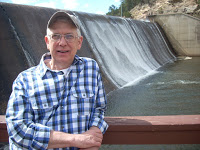For me clubs have always been about responsibility: treasurer, president, secretary, vice-president, committee chair, on and on. I am sure I learned this from the outset when we neighborhood boys formed the Ark Club. But that was play, kind of like Cowboys and Indians or Army but with paperwork. Then adults began to organize us in a moral effort to control kids and their activities: Cub Scouts, Boy Scouts, choirs, and youth groups. These clubs attracted me for their activities but not their group pride, personal recognition, or promised advantages. I don’t say this as a matter of criticism but simply as a description of my introverted preference and deep independence. I liked having things to do if they matched my interests, I got along well with peers, and I was respectful to adult leaders. Often I became some kind of leader although I didn’t seek such leadership preferring simply to help and to enjoy. I didn’t care to beat a drum for attention. I could tolerate
responsibility for short periods of time, but mostly I wanted to learn and to experience.
Around age thirty, my career was on the line demanding of me a choice between doing church work and teaching music history. I gave myself six months to figure out which way I’d go. In so doing, I realized I needed to give the church career a better chance. So I attended some religious education events, first, an intense training program organized by the Regional and General levels of the church and second, the meeting of a professional association of religious educators. Over-all the groups did not do much for me, the former seeming too much related to the status quo of congregational life, the latter seeming just a bit too embarrassing to me to make a strong identification. Still at each of these meetings I met some nice people and at each event a couple of very impressive individuals. Furthermore I observed interactions that attracted me, not relationships I wanted but ones that revealed these leaders were as complicated as I was and as bright or brighter. Certainly some of them were living life rather largely (a term I will not address in this story).
I compared these religious educators with the professors I knew, that other professional group I was observing, and found as much or more creativity among the church educators. Plus for me, I realized, I needed the stimulation of working with people of all ages rather than the small age range of undergrads in college. Church offered more freewheeling educational leadership opportunities. I opted for a career in congregations.
Some years later I was recruited to run for president elect in the professional association, a group that still slightly embarrassed me. Beyond the embarrassment I had friends in the group and annual meetings had become an important time away from work and family. I thought over the offer and realized it came with a four to five year sentence: attendance at annual meetings for running for office, serving as president-elect, serving as president, serving as immediate past president whose responsibility it was to oversee the next elections, and my requirement to show up at the following meeting unlike almost every past president I had known in the group. Did I really want to do this? I thought I saw an opportunity to help the organization become less an in-group and more open to the paraprofessional educators most congregations were hiring to organize and oversee their programs. There were fewer and fewer full-time jobs for seminary-trained educators on the horizon. Still the nomination promised mostly a bunch of work.
I did that work and stayed through my sentence. I didn’t regret it and learned so much during the five years, but I also got too close to the bared emotions of people for whom such a position was seen as a great honor that took them on a power trip. Yuck. This work was important—okay—but to take oneself so seriously in its execution seemed hopeless to me, too much like what I observed in some pastors, preachers, and evangelists. Worse than embarrassing!
Clubs: for the most part, I’m not interested. Still today I am leading a program and attend several gatherings of artists, writers, and storytellers. And I go out with a gang of guys for happy hour every Friday night. But the real attraction in these groups is the interesting people I see and the new things I learn as we write, read, tell stories, and make art together.
Denver, © 30 March 2015
About the Author
Phillip Hoyle lives in Denver and spends his time writing, painting, and socializing. In general he keeps busy with groups of writers and artists. Following thirty-two years in church work and fifteen in a therapeutic massage practice, he now focuses on creating beauty. He volunteers at The Center leading the SAGE program “Telling Your Story.”
He also blogs at artandmorebyphilhoyle.blogspot.com

